Migrate Cosmos Db To Another Cosmos Db
Preparing for the Migration:
Before starting the migration process, it is essential to prepare adequately. Here are the key steps you should follow:
1. Understand the requirements: Familiarize yourself with the requirements of the destination Cosmos DB. Ensure that the necessary resources, such as compute, storage, and networking, are available.
2. Define the migration scope: Determine which components of the source Cosmos DB need to be migrated, including the databases, containers, schemas, and stored procedures.
3. Evaluate compatibility: Make sure that the source Cosmos DB and the destination Cosmos DB have compatible versions and features to ensure a smooth migration.
Selecting the Destination Cosmos DB:
Once you have prepared for the migration, the next step is to select the destination Cosmos DB where you will migrate your data. Consider the following factors when choosing the destination:
1. Performance and scalability: Ensure that the destination Cosmos DB can handle the expected workload and provide the required performance and scalability.
2. Geographical proximity: If latency is a concern, select a region for the destination Cosmos DB that is geographically close to your users or applications to minimize network latency.
3. Compliance and security: If your source Cosmos DB has specific compliance or security requirements, ensure that the destination Cosmos DB meets those requirements.
Back up the Source Cosmos DB:
Before initiating the migration, it’s crucial to create a backup of the source Cosmos DB to avoid any data loss. You can use the built-in backup feature of Cosmos DB or leverage third-party tools for this purpose.
Creating the Schema in the Destination Cosmos DB:
Once you have selected the destination Cosmos DB, the next step is to create the schema that matches the source Cosmos DB. This step is crucial to ensure a smooth migration process. Here’s what you need to do:
1. Establish the database and containers: Create the required databases and containers in the destination Cosmos DB, ensuring that the names and configurations match the source Cosmos DB.
2. Define the schema: Analyze the schema of the source Cosmos DB and replicate it in the destination Cosmos DB. This includes defining the collections, partitions, indexes, and any custom user-defined functions.
Migrating Data from Source to Destination:
With the schema in place, it’s time to migrate the data from the source Cosmos DB to the destination Cosmos DB. There are various approaches you can take for data migration, depending on your specific scenario:
1. Azure Cosmos DB migration tool: Microsoft offers the Azure Cosmos DB Migration Tool, which provides a seamless way to migrate data from a source Cosmos DB to a destination Cosmos DB. This tool supports both online and offline migration methods, allowing you to choose the most suitable approach based on your requirements.
2. SQL to Cosmos DB migration: If your source database is using SQL, you can leverage data migration services like Azure Data Factory or Azure Databricks to convert and move the data to the destination Cosmos DB.
3. Oracle to Cosmos DB migration: For migrating data from an Oracle database to Cosmos DB, you can use the Azure Database Migration Service or third-party tools like Attunity to facilitate a smooth transition.
4. Migrate Postgres to Cosmos DB: If you are migrating from a PostgreSQL database, you can use the Azure Database Migration Service or third-party tools like EDB Postgres Advanced Server Migration Toolkit to facilitate the migration process.
Implementing Data Validation and Testing:
Once the data migration is complete, it is crucial to validate the integrity and accuracy of the migrated data. Perform comprehensive data validation and testing to identify any issues or inconsistencies. This step is essential to ensure that the destination Cosmos DB is ready for production use.
Switching to the Destination Cosmos DB:
After validating the migrated data, it’s time to switch to the destination Cosmos DB. Depending on your specific scenario, you may need to follow these additional steps:
1. Move Cosmos DB to another subscription: If you need to move your Cosmos DB to another subscription, you can leverage Azure Resource Manager (ARM) templates or Azure PowerShell commands to perform the move.
2. Move data from one container to another Azure Cosmos DB: To move data from one container to another within the same Cosmos DB account, you can use built-in features like the Change Feed Processor library, Azure Data Factory, or Azure Functions.
3. Azure Cosmos DB limits: Be aware of the scalability limits of Azure Cosmos DB and ensure that you don’t exceed them during or after the migration process. These limits include the maximum size per partition key range, provisioned throughput, and maximum response size.
FAQs:
Q1. Can I migrate my Cosmos DB to another tenant?
A1. Yes, it is possible to migrate your Cosmos DB to another tenant. However, the process can be complex and usually involves exporting data from the source Cosmos DB and then recreating it in the destination tenant.
Q2. How can I move data from one container to another within Azure Cosmos DB?
A2. To move data from one container to another within the same Azure Cosmos DB account, you can leverage features like the Change Feed Processor library, Azure Data Factory, or Azure Functions.
Q3. Is there any tool available for migrating data from PostgreSQL to Cosmos DB?
A3. Yes, you can use tools like the Azure Database Migration Service or third-party tools like EDB Postgres Advanced Server Migration Toolkit for migrating data from PostgreSQL to Cosmos DB.
Q4. How can I migrate data from SQL to Cosmos DB?
A4. For migrating data from SQL to Cosmos DB, you can leverage data migration services like Azure Data Factory or Azure Databricks to convert and move the data to the destination Cosmos DB.
Q5. What are the limits of Azure Cosmos DB?
A5. Azure Cosmos DB has various limits, including the maximum size per partition key range, provisioned throughput, and maximum response size. It’s crucial to be aware of these limits and ensure they are not exceeded during or after the migration process.
In conclusion, migrating a Cosmos DB to another Cosmos DB requires thorough preparation, careful selection of the destination Cosmos DB, proper backup, schema creation, data migration, validation, and switching to the destination. By following the steps outlined in this article and addressing the FAQs, you will be well-prepared to migrate your Cosmos DB successfully.
How To Copy Data From One Azure Cosmos Db Container To Another Container | Azure Tips And Tricks
How To Migrate From Cosmos Db To Mongodb?
Migrating from one database system to another can be a daunting task, but if you’re considering moving from Microsoft Azure’s Cosmos DB to MongoDB, we’ve got you covered. In this article, we will explore the step-by-step process of migrating your data from Cosmos DB to MongoDB, ensuring a smooth and successful transition.
Why Migrate from Cosmos DB to MongoDB?
There could be several reasons why you are considering migrating from Cosmos DB to MongoDB. MongoDB, an open-source NoSQL database, offers a flexible schema, scalability, and extensive community support. It provides excellent performance and has become popular amongst developers and enterprises alike. Additionally, MongoDB’s support for document-oriented databases aligns with many application requirements. If these features align with your needs, you may find a compelling reason to migrate to MongoDB.
Step-by-Step Process of Migrating from Cosmos DB to MongoDB
Performing a successful migration requires careful planning and execution. Here is a step-by-step guide to help you navigate through the process:
1. Analyze and Understand the Data Model:
Start by analyzing your current Cosmos DB data model and understanding how it maps to MongoDB’s document model. Determine the required changes in your application code, collections, and documents to ensure compatibility.
2. Set Up and Configure a MongoDB Deployment:
Install and configure MongoDB, either on-premises or in the cloud, depending on your requirements. Ensure that your deployment is properly provisioned to handle the anticipated load.
3. Export Data from Cosmos DB:
Utilize Cosmos DB’s Data Migration Tool to export your existing data to a compatible format, such as JSON or BSON. This tool enables you to transfer collections, documents, and indexes directly to your MongoDB deployment.
4. Transform the Data (if necessary):
During the migration process, you might need to transform your data to match the new schema if there are differences between Cosmos DB and MongoDB’s document models. Common transformations include converting data types, restructuring JSON fields, or renaming fields.
5. Import Data into MongoDB:
Use the MongoDB Import tool or write custom scripts to import the transformed data into your MongoDB collections. Ensure that you maintain the structure and relationships of your data during the import process.
6. Validate and Verify Data:
After importing the data, validate the integrity and accuracy of the migrated data to ensure that it mirrors the original Cosmos DB data. Use comprehensive testing approaches to verify that your applications function properly with the new MongoDB database.
7. Update Application Code:
Make the necessary changes to your application code to accommodate the new MongoDB data model. Update query syntax and handle any differences between Cosmos DB and MongoDB’s APIs.
8. Plan for Downtime:
Depending on the size of your data, the migration process may require downtime. Ensure that you plan and communicate the downtime to your users beforehand to minimize any disruptions.
Frequently Asked Questions (FAQs):
1. Can I perform the migration process without any downtime?
Migrating data between databases usually involves some downtime. However, with careful planning and implementation, you can minimize the downtime impact. Consider performing the migration during off-peak hours or employing strategies like a phased migration or running both databases in parallel temporarily.
2. Will my queries and indexes still work after the migration?
MongoDB has a powerful query language, but there might be differences in syntax and features compared to Cosmos DB. You will need to review and update your queries to maintain functionality. Additionally, validate and recreate your indexes in MongoDB to optimize performance.
3. Can I migrate all types of data from Cosmos DB to MongoDB?
Yes, you can migrate various types of data from Cosmos DB to MongoDB. Both databases support a wide range of data types. However, it is crucial to understand and map the differences in data models between the two databases to ensure a successful migration.
4. What tools are available to assist in the migration process?
Both Cosmos DB and MongoDB offer helpful tools for migrating data. Cosmos DB provides the Data Migration Tool, which simplifies exporting data from Cosmos DB. MongoDB offers the MongoDB Import tool, or you can choose to write custom scripts for data migration. These tools streamline the process and offer support throughout the migration.
5. How do I ensure the security of my data during the migration process?
During the migration process, ensure that access to your data is limited to authorized personnel only. Encrypt your data during the transfer and validate the security measures employed by the migration tools you are using. Following security best practices and remaining vigilant throughout the process will help safeguard your data.
In conclusion, migrating from Cosmos DB to MongoDB requires careful planning, data analysis, and execution. By following the step-by-step process outlined in this article, you can ensure a successful migration and take advantage of MongoDB’s flexibility, scalability, and community support. Remember to thoroughly validate your data and update your application code to leverage the full potential of MongoDB.
Can We Replicate Data In Cosmos Db?
Cosmos DB is a globally distributed, multi-model database service provided by Microsoft Azure. It offers various features such as automatic indexing, multiple consistency models, and global distribution to cater to the needs of modern application development. One of the key aspects of Cosmos DB is its ability to replicate data across different regions, ensuring high availability, scalability, and fault-tolerance. In this article, we will delve into the concept of data replication in Cosmos DB, exploring its benefits, considerations, and common use cases.
Understanding Data Replication in Cosmos DB:
Data replication in Cosmos DB refers to the process of distributing and synchronizing data across multiple Azure regions. This replication allows for fault tolerance in case of region failures and enables low-latency access for users in different geographic locations. Cosmos DB provides two modes of data replication:
1. Automatic Data Replication: Cosmos DB offers automatic multi-master replication, which creates and maintains replicas of your data across multiple regions. This replication occurs synchronously, ensuring that all data changes are propagated to each replica before they are acknowledged to the client. This mode of replication provides optimal performance and high availability. However, it is recommended to have at least two regions for automatic replication to avoid single-point-of-failure scenarios.
2. Manual Data Replication: In addition to automatic replication, Cosmos DB also allows manual data replication. This mode enables you to choose specific regions for data replication and define the synchronization type. For example, you may choose to replicate data asynchronously, which allows for lower latency at the expense of potential data loss in case of a region failure. Manual replication gives you more control over your data distribution strategy, but it requires careful planning and configuration.
Benefits of Data Replication in Cosmos DB:
1. High Availability: Data replication ensures that your application remains accessible even in the event of regional failures. With replicas distributed across multiple regions, Cosmos DB automatically redirects requests to available replicas, minimizing downtime.
2. Low Latency: By placing replicas closer to users in different regions, data replication reduces network latency, resulting in faster response times. This is crucial for applications that require real-time data access or interact with users located in various parts of the world.
3. Disaster Recovery: Replicating data allows for easy disaster recovery scenarios. In case of data loss or a catastrophic event, replicas can be promoted to primary regions, ensuring business continuity and minimal data loss.
4. Scalability: Data replication in Cosmos DB enables horizontal scalability. Additional regions can be added to distribute the workload and handle increased traffic without impacting performance.
Considerations for Data Replication in Cosmos DB:
1. Cost: Since data replication in Cosmos DB involves maintaining replicas in multiple regions, it may incur additional costs. Consider the impact on your budget and optimize the number of regions based on your application’s requirements.
2. Consistency: As data replication involves distributing data across regions, ensuring consistency becomes a crucial factor. Cosmos DB provides multiple consistency models to choose from, ranging from strong to eventual, allowing you to balance consistency requirements with performance.
3. Application Design: Replication impacts your application design, as you need to handle scenarios where conflict resolution may be required. For example, if two replicas in different regions receive conflicting updates simultaneously, you need to define rules to resolve these conflicts consistently.
Common Use Cases for Data Replication in Cosmos DB:
1. Global Web Applications: For web applications that target a global user base, data replication ensures low-latency access and a consistent user experience. Users in different regions can seamlessly access the application without experiencing significant delays.
2. IoT and Real-time Analytics: Data replication is beneficial for IoT applications that generate massive amounts of data from various devices globally. By replicating data, real-time analytics can be performed locally in different regions, minimizing data transfer costs and reducing latency.
3. Compliance and Data Sovereignty: Data replication can assist with compliance regulations by ensuring data is stored in specific regions to meet legal requirements. This is particularly important for companies dealing with sensitive customer data or operating in multiple jurisdictions.
FAQs:
Q1. Is data replication available in all Azure regions?
A1. Data replication is available in most Azure regions, allowing you to choose the regions that cater to your application requirements. However, it is advisable to check the regional availability of Cosmos DB before planning your data distribution strategy.
Q2. Can I change the replication configuration after deploying Cosmos DB?
A2. Yes, you can modify the replication configuration of an existing Cosmos DB account. This includes adding or removing regions, changing the synchronization type, or promoting a replica to a primary region.
Q3. Does data replication impact my application performance?
A3. Data replication can enhance application performance by reducing latency and improving availability. However, it is essential to consider factors such as consistency models, network bandwidth, and read/write ratios to optimize performance in your specific scenario.
Q4. How does Cosmos DB handle conflict resolution in replicated data?
A4. Cosmos DB provides conflict resolution mechanisms such as Last Writer Wins (LWW), application-defined resolution, or custom conflict resolvers. You can choose the appropriate method based on your application requirements and data access patterns.
In conclusion, data replication in Cosmos DB plays a vital role in ensuring high availability, low latency, and scalability. It allows applications to distribute data across multiple regions, reducing the risk of downtime and improving user experiences. By understanding the benefits, considerations, and use cases of data replication in Cosmos DB, you can effectively leverage this feature to meet the needs of your modern, global applications.
Keywords searched by users: migrate cosmos db to another cosmos db move cosmos db to another subscription, cosmos db migration tool, migrate postgres to cosmos db, sql to cosmos db migration, oracle to cosmos db migration, migrate cosmos db to another tenant, move data from one container to another azure cosmos db, Azure cosmos db limit
Categories: Top 36 Migrate Cosmos Db To Another Cosmos Db
See more here: nhanvietluanvan.com
Move Cosmos Db To Another Subscription
Moving a Cosmos DB database to another subscription involves multiple steps, and it is crucial to follow them carefully to ensure a smooth transition. Here is a comprehensive guide to help you navigate through the process:
1. Determine the Scope: Start by identifying the specific Cosmos DB databases or containers you wish to move to another subscription. It is crucial to have a clear understanding of the extent of the move to avoid any accidental data loss or disruption.
2. Set up the Target Subscription: Create a new Azure subscription in the Azure portal if you don’t already have one. Ensure that the necessary permissions are granted to the account that will perform the migration.
3. Evaluate Dependencies: Before initiating the move, consider any dependencies your Cosmos DB database might have with resources in the source subscription, such as virtual networks, firewalls, or private endpoints. These dependencies need to be recreated or updated in the target subscription to maintain an uninterrupted connection.
4. Plan for a Downtime: Determine the expected downtime during the migration process. Depending on the size and complexity of your database, the migration process can take a significant amount of time. Minimize the impact on your users by scheduling the migration during off-peak hours or implementing appropriate fallback strategies.
5. Extract Data from the Source Subscription: Use the Azure Data Migration tool or any other suitable method to export the data from the source subscription. This involves creating a backup or snapshot of the existing databases, including all the data, documents, and settings.
6. Provision Resources in the Target Subscription: In the target subscription, provision the necessary resources to recreate the Cosmos DB databases or containers. Ensure that the target resources, such as virtual networks or firewalls, are appropriately configured to match the source environment.
7. Import Data to the Target Subscription: Once the resources are set up, import the previously exported data into the target Cosmos DB databases or containers. This can be done using the Azure Data Migration tool or specialized migration services offered by Azure.
8. Validate and Test: Perform thorough validation and testing to ensure the data has been successfully migrated and is accessible in the target subscription. Verify data integrity and run tests to confirm the functionality of any applications or services relying on the migrated databases.
9. Redirect Applications or Services: Once the migration is complete and the data is validated, update the necessary configurations in applications or services to point them to the new Cosmos DB databases in the target subscription. This step ensures a seamless transition for end-users.
Now, let’s address some frequently asked questions related to moving Cosmos DB to another subscription:
Q: Is it possible to move a Cosmos DB database across different Azure Active Directory (AAD) tenants?
A: Yes, you can move a Cosmos DB database across different AAD tenants. However, it requires additional steps to configure trust relationships between the source and target AAD tenants. It is recommended to consult the Azure documentation for detailed guidance on this scenario.
Q: Is there any downtime during the migration process?
A: Yes, there will be downtime during the migration process since the data needs to be exported from the source subscription and then imported into the target subscription. The duration of downtime depends on factors such as the size of the database and network speed.
Q: Can I move a Cosmos DB database from one region to another while moving to a different subscription?
A: Yes, it is possible to move a Cosmos DB database to another subscription and change the region simultaneously. However, keep in mind that this will result in extra steps and potential downtime, as the data needs to be replicated to the new region.
Q: Is it necessary to recreate all the configuration settings in the target subscription?
A: Yes, when moving a Cosmos DB database to another subscription, it is crucial to configure all settings and dependencies in the target subscription, including virtual networks, firewall rules, and private endpoints. Failure to recreate these settings can lead to connectivity issues.
Moving a Cosmos DB database to another subscription requires careful planning, execution, and validation to ensure a successful migration. By following the steps outlined in this article and considering the FAQs, you’ll be able to move your database with minimal disruption and maximize the benefits of Azure’s flexible subscription structure.
Cosmos Db Migration Tool
Introduction:
In today’s digital era, data migration is an essential part of any organization’s journey towards modernizing their infrastructure. When it comes to migrating and transforming data between different data models and platforms, Azure Cosmos DB, Microsoft’s globally distributed, multi-model database service, provides a powerful and flexible solution. Alongside Cosmos DB, Microsoft offers the Cosmos DB Migration Tool, a feature-rich utility that simplifies and orchestrates the entire migration process. In this article, we will take an in-depth look at the Cosmos DB Migration Tool, its features, benefits, and provide answers to some frequently asked questions.
Understanding the Cosmos DB Migration Tool:
The Cosmos DB Migration Tool is designed to help organizations migrate data from a variety of sources, such as on-premises databases, SQL Server, MongoDB, Amazon DynamoDB, and other platforms to Azure Cosmos DB effortlessly. The tool provides end-to-end support from the source selection, schema analysis, data movement, and monitoring, making data migration an efficient and seamless process.
Key Features and Benefits:
1. Multiple Data Source Support: The Cosmos DB Migration Tool supports a wide range of data platforms, allowing users to migrate various data sources to Cosmos DB. This flexibility ensures that organizations can migrate their existing databases without worrying about compatibility issues.
2. Schema Analysis and Generation: The tool performs a thorough analysis of the source database schema and automatically generates the corresponding schema for Cosmos DB. This relieves the user from the hassle of manually creating the schema, saving valuable time and resources.
3. High-Performance Data Migration: The Cosmos DB Migration Tool leverages the power of parallelism to ensure efficient data movement. It utilizes multiple threads to concurrently migrate data from the source database to Cosmos DB, drastically reducing the migration time.
4. Data Transformation and Mapping: During the migration process, the tool provides options to transform and map data as per the business requirements. This enables organizations to perform necessary data transformations and maintain consistency across the migrated data.
5. Incremental Data Migration: The tool supports incremental migration, allowing users to migrate the changes made in the source database after the initial migration. This feature is particularly useful when transitioning from a legacy database to Cosmos DB, ensuring minimal data loss during the migration process.
6. Seamless Monitoring and Reporting: The Cosmos DB Migration Tool offers real-time monitoring and reporting capabilities, providing users with insights into the migration progress, data transfer rates, and any potential errors or warnings. This helps organizations keep track of the migration process and troubleshoot issues promptly.
Frequently Asked Questions (FAQs):
1. Is the Cosmos DB Migration Tool free to use?
Yes, the Cosmos DB Migration Tool is available for free download and usage. However, it is important to note that the actual cost of utilizing Azure Cosmos DB for storing data may apply.
2. Can the tool be used to migrate data from on-premises servers to Azure Cosmos DB?
Absolutely. The Cosmos DB Migration Tool supports both on-premises databases and various cloud-based platforms. Users can migrate data from on-premises servers like SQL Server, PostgreSQL, or MySQL to Cosmos DB effortlessly.
3. Does the Cosmos DB Migration Tool support all Azure Cosmos DB APIs?
Yes, the tool supports migrating data to all Azure Cosmos DB APIs, including Core (SQL) API, MongoDB API, Cassandra API, Gremlin API, and Azure Table API. Users can choose their desired target API during the migration process.
4. Can the tool handle large-scale data migrations?
Yes, the Cosmos DB Migration Tool is well-suited for large-scale data migrations. It utilizes parallelism and multiple threads to ensure efficient data transfer, enabling organizations to handle even the most substantial datasets.
5. Are there any limitations or considerations when using the Cosmos DB Migration Tool?
While the tool provides a robust data migration solution, it is important to consider certain factors, such as the size of the source database, available network bandwidth, and the target Cosmos DB instance’s throughput capacity. Organizations should perform thorough planning and analysis to ensure a smooth migration process.
Conclusion:
The Cosmos DB Migration Tool empowers organizations to seamlessly migrate data from various sources to Azure Cosmos DB. With its extensive features, including multiple data source support, schema analysis and generation, efficient data migration, data transformation and mapping capabilities, incremental migration, and real-time monitoring and reporting, the tool simplifies the migration process, reduces downtime, and ensures data integrity. Seamlessly integrating with Azure Cosmos DB, the Cosmos DB Migration Tool enables organizations to modernize their data infrastructure and take advantage of the scalability, global distribution, and flexibility offered by Cosmos DB.
Migrate Postgres To Cosmos Db
In recent years, the demand for scalable and dynamic database solutions has increased significantly. This shift in requirements has led many organizations to consider migrating their database systems to the cloud. Microsoft’s Azure Cosmos DB, a globally distributed, multi-model database service, offers an ideal solution for businesses looking to scale and manage their data effectively. This article will delve into the process of migrating PostgreSQL to Cosmos DB, highlighting key considerations, benefits, and frequently asked questions to ensure a successful transition.
Understanding PostgreSQL and Cosmos DB
Before discussing the migration process, it is essential to understand the characteristics of both PostgreSQL and Cosmos DB.
PostgreSQL, also known as Postgres, is a widely used open-source relational database management system. It offers a robust set of features, including ACID (Atomicity, Consistency, Isolation, and Durability) compliance and support for a wide range of data types. PostgreSQL’s flexibility, extensibility, and mature community make it a popular choice for various applications.
On the other hand, Cosmos DB is a globally distributed, horizontally scalable, and multi-model NoSQL database offered as a part of Microsoft Azure. It supports various APIs, including SQL, MongoDB, Gremlin, Cassandra, and Table, making it compatible with diverse application needs. With its automatic indexing, low latency, and comprehensive global distribution, Cosmos DB is designed for modern web and cloud applications that require high availability and scalability.
Planning the Migration
1. Evaluate the Database Schema: Before starting the migration process, thoroughly analyze the PostgreSQL database schema to understand the data structure, relationships, and dependencies. This evaluation will help identify any challenges or modifications that may be required during the migration.
2. Data Assessment and Preparations: Assess the size of the PostgreSQL database, the volume of data, and its growth rate. This evaluation will help determine the appropriate Cosmos DB pricing tier and provisioned throughput. Additionally, consider transforming the data into a format compatible with Cosmos DB, such as JSON.
3. Choose Cosmos DB API: Cosmos DB offers different APIs, each with its own benefits and use cases. Evaluate which API is most suitable for your workload, depending on the structure and requirements of your application. For example, an SQL API is recommended for relational data models like PostgreSQL.
Migration Steps
1. Create a Cosmos DB Account: Begin the migration process by creating a Cosmos DB account on the Azure portal. Select the desired API and specify the preferred consistency model, region, and connectivity options. Provision the desired throughput and capacity according to your workload requirements.
2. Prepare Cosmos DB Target Container: Create a new container in Cosmos DB that will serve as the destination for the migrated data. Define the container’s partition key, indexing policy, and other necessary configurations based on your application’s requirements.
3. Data Extraction: Extract data from PostgreSQL using appropriate tools or scripts. Convert the extracted data into a format compatible with Cosmos DB, such as JSON. Ensure that foreign key relationships and any data constraints are maintained during the extraction.
4. Data Transformation and Mapping: Map the PostgreSQL data to Cosmos DB’s data model based on the chosen API. Perform any necessary transformations to match the new data structure. This step may require modifying the schema, handling data type differences, and addressing any other inconsistencies.
5. Load Data into Cosmos DB: Utilize Cosmos DB’s data import tools, SDKs, or APIs to load the transformed data into the target container. Consider using bulk import techniques for faster migration.
6. Test and Validate: After loading the data, thoroughly test the migrated data against existing application functionalities to ensure data consistency, integrity, and accuracy. Validate that all queries, constraints, and relationships are correctly maintained in the Cosmos DB environment.
7. Update Application Connection: Modify your application’s connection string to connect to Cosmos DB rather than PostgreSQL. Make any necessary code changes to adapt to the new data model or API.
FAQs
Q1. Will my existing SQL queries work in Cosmos DB?
Yes, Cosmos DB supports SQL syntax, allowing you to use your existing SQL queries against the migrated data.
Q2. How does Cosmos DB ensure high availability and disaster recovery?
Cosmos DB provides automatic replication and distribution across different regions, ensuring high availability and disaster recovery. You can choose the desired number of regions for data replication during the provisioning.
Q3. Can I migrate PostgreSQL functions and stored procedures to Cosmos DB?
No, Cosmos DB does not support the migration of PostgreSQL functions or stored procedures as they have different programming models.
Q4. How can I ensure data consistency during the migration process?
You can achieve data consistency by following proper data extraction, transformation, and mapping techniques. Thorough testing and validation are crucial to ensuring data integrity and consistency.
Q5. What are the pricing considerations for Cosmos DB?
Pricing for Cosmos DB is based on factors such as utilized storage, provisioned throughput, data transfers, and additional features. Carefully evaluate your workload requirements to choose an appropriate pricing tier.
Migrating PostgreSQL to Cosmos DB offers a multitude of benefits, including scalability, global distribution, and automatic indexing. By understanding the migration process, conducting a thorough evaluation, and following best practices, organizations can seamlessly transition their PostgreSQL databases to Cosmos DB and unlock the full potential of a cloud-native database solution.
Images related to the topic migrate cosmos db to another cosmos db
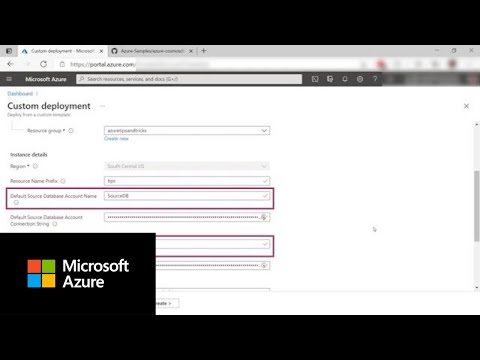
Found 9 images related to migrate cosmos db to another cosmos db theme



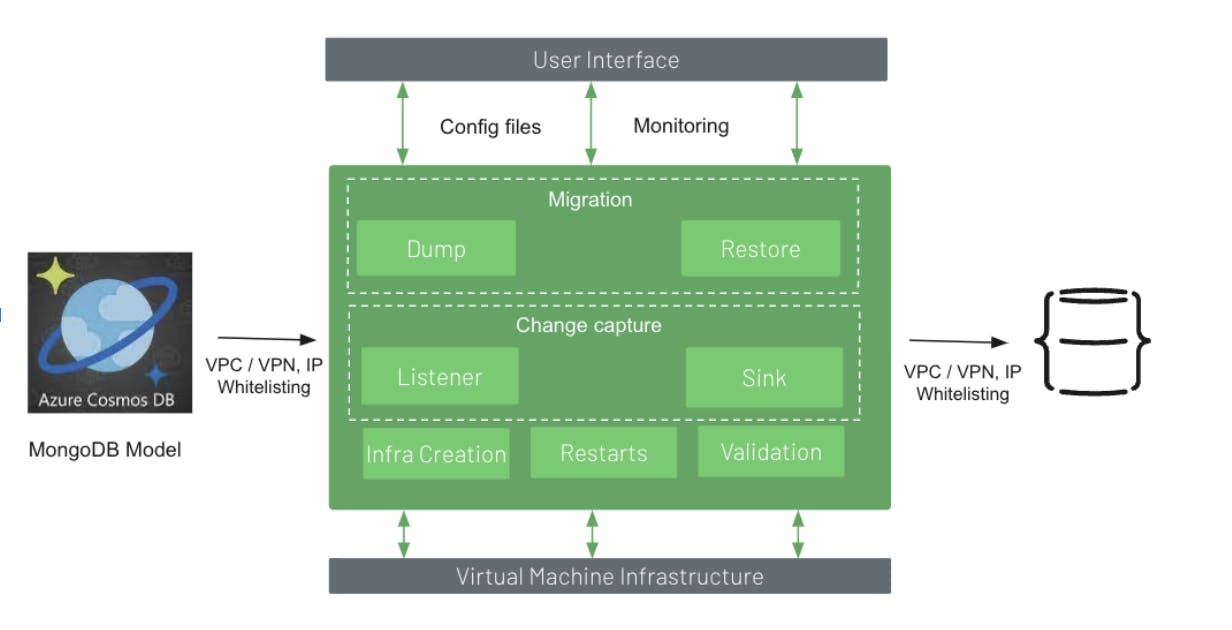


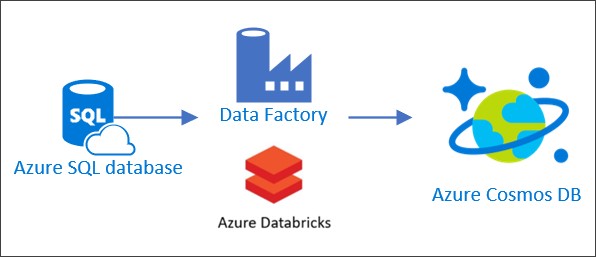

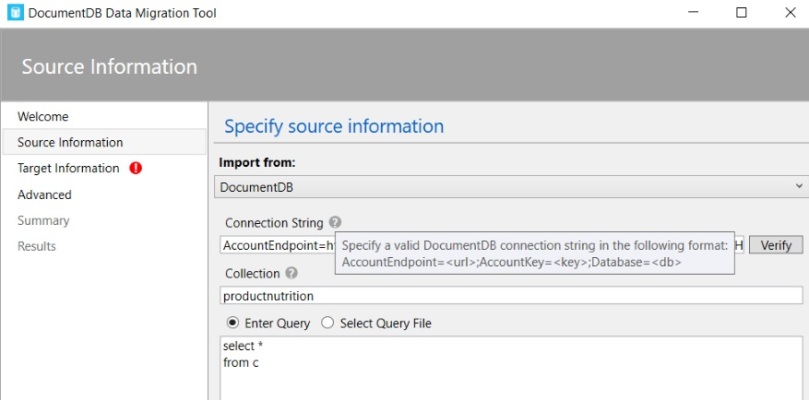
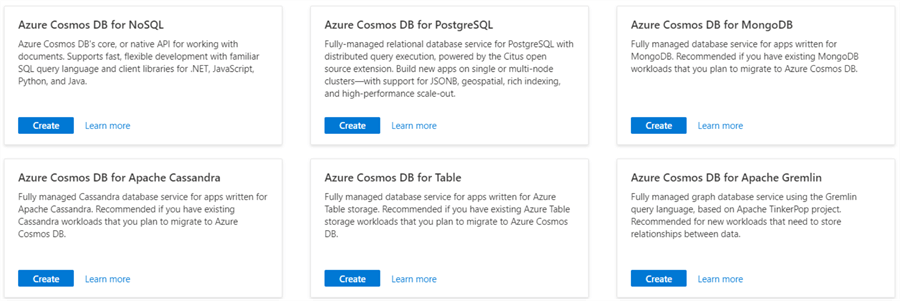






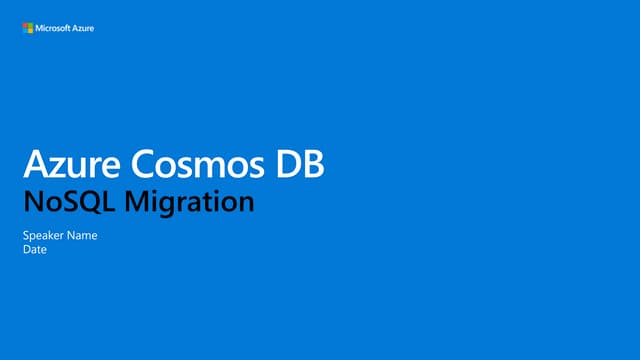
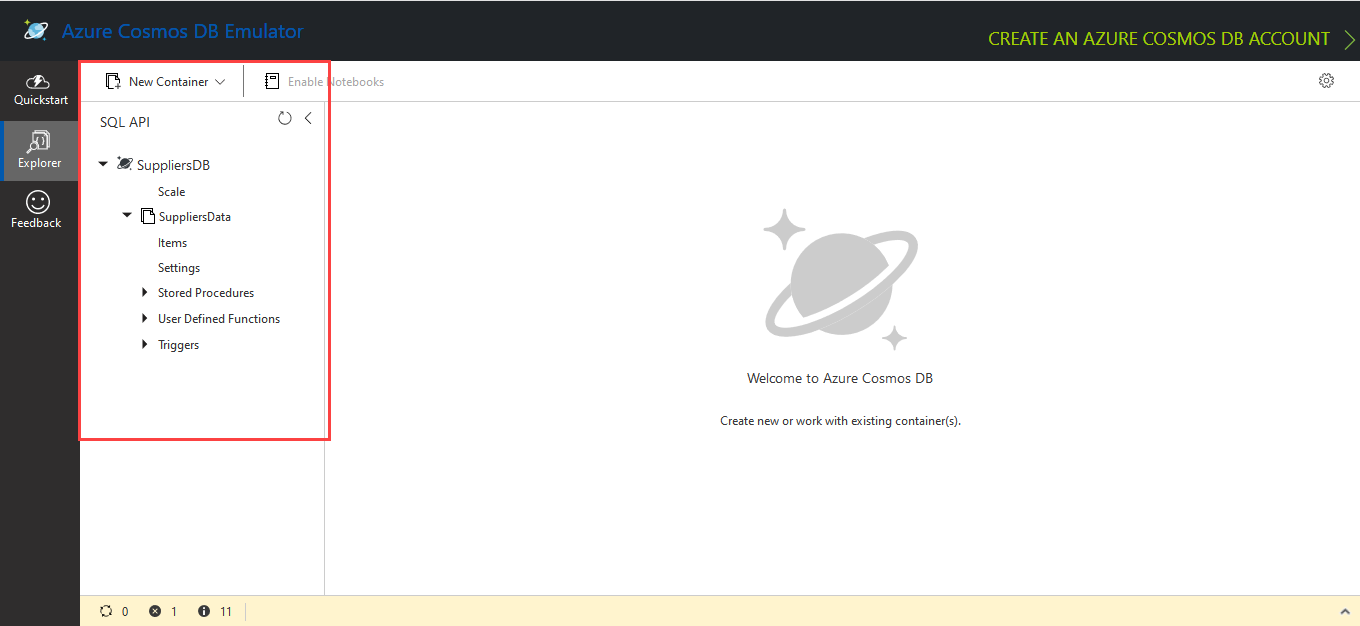

Article link: migrate cosmos db to another cosmos db.
Learn more about the topic migrate cosmos db to another cosmos db.
- How to copy data from one Azure Cosmos DB container to …
- What is the easiest way to migrate data from one Cosmos DB …
- Cosmos DB Migration From One tenant to Another
- Tutorial: Migrate MongoDB online to Azure Cosmos DB for MongoDB
- Distribute data globally with Azure Cosmos DB | Microsoft Learn
- Microsoft Azure CosmosDB Table API has deprecated and replaced with …
- Azure Cosmos DB Migration options | Microsoft Learn
- Best way to export data from on cosmos db account into another
- Azure Cosmos DB Desktop Data Migration Tool – GitHub
- How to migrate an Azure Cosmos DB instance – Radu Vunvulea
See more: https://nhanvietluanvan.com/luat-hoc